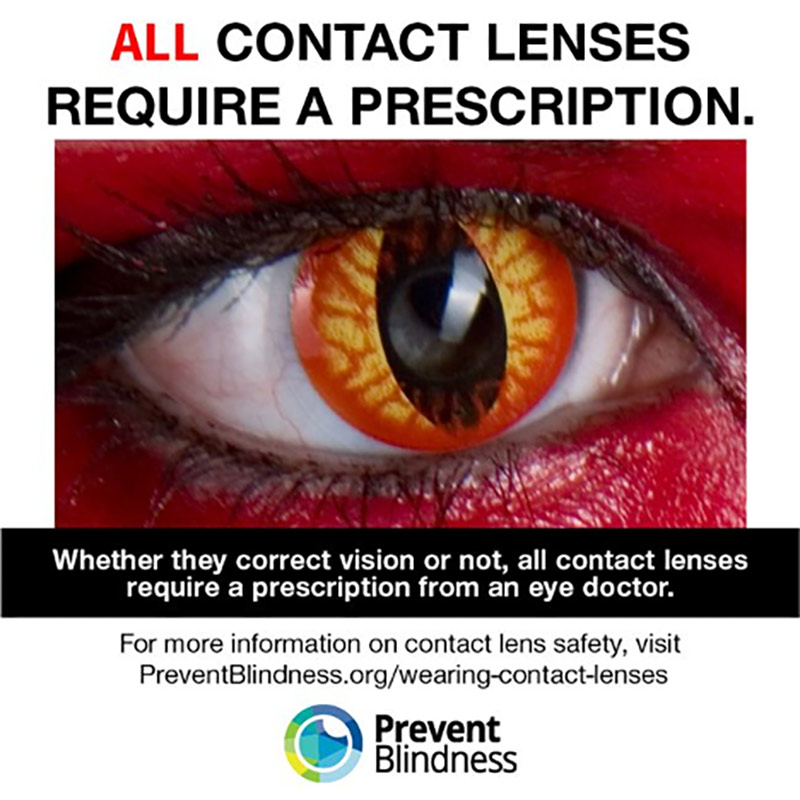By Linda Conlin, Pro to Pro Managing Editor

It’s that time of year again when illegal costume contact lenses seem to pop up everywhere from kiosks to convenience stores, and even gas stations. As eye care professionals, we know the dangers that unprescribed, one-size-fits-all contact lenses pose to vision and eye health. Not only is it illegal in the US to sell contact lenses without a prescription, but costume contacts are illegally imported into the country. In fact, in 2021, U.S. Customs and Border Protection (CBP) officers and U.S. Food and Drug Administration (FDA) officers found a total of 26,477 pairs of undeclared or mis declared decorative contact lenses, with an estimated retail price of $479,082 had they been legally imported. Not only do theses lenses lack FDA approval, many of these illegal imports have the kind of microbial contamination commonly found in hospital wastewater or spoiled food.
As if that weren’t enough, researchers in Japan found that several varieties of over-the-counter costume contact lenses tested positive for chlorine and other harmful chemicals, and colorants printed or pressed onto some decorative lenses create an uneven texture that could injure the eye. Researchers analyzed the surfaces and principal elements of the colorants of five commercially available costume contact lenses (Cos-CL) using scanning electron microscopy with energy-dispersive x-ray analysis. While in two of the lenses the colorants were inside the lens, colorants in the other three lenses were deposited on either the anterior or posterior surface. Colorants used in all lenses contained chlorine, iron, and titanium. In the magnified scanning electron microscopy images of a certain lens, chlorine is exuded and spread. One pair even seeped chlorine after being rinsed. (Scanning Electron Microscopy Findings With Energy-Dispersive X-ray Investigations of Cosmetically Tinted Contact Lenses. Eye & Contact Lens: Science & Clinical Practice 41(5):p 291-296, September 2015. | DOI: 10.1097/ICL.0000000000000122)
Analysis of the contact lens surface indicated deposits that contained calcium. The study showed a wide variation in the location, surface quality/roughness, and chemical composition of the tinted portion of the lenses. Researchers further determined that the deposited colorants are a cause of friction on the corneal epithelium. Heavily applied colorants may alter the rigidity of the lens, and this alteration may also cause friction on the cornea. In an earlier study, Chan et al. reported that surface pigments on Cos-CL resulted in significantly higher bacterial adherence, increasing the risk of infection.
While four of the five lenses in the study are not available legally in the United States, there are many more of these dangerous unregulated lenses found here. As ECPs, we can help protect consumers’ vision health, as well as contact lens practitioners and legitimate sellers by reporting illegal sales and adverse events.
Here's how:
- Report a website illegally selling contact lenses.
- Report an adverse event related to contact lenses.
- Report problems with decorative contact lenses.
- Report illegal sellers to your state health or consumer protection agency.













